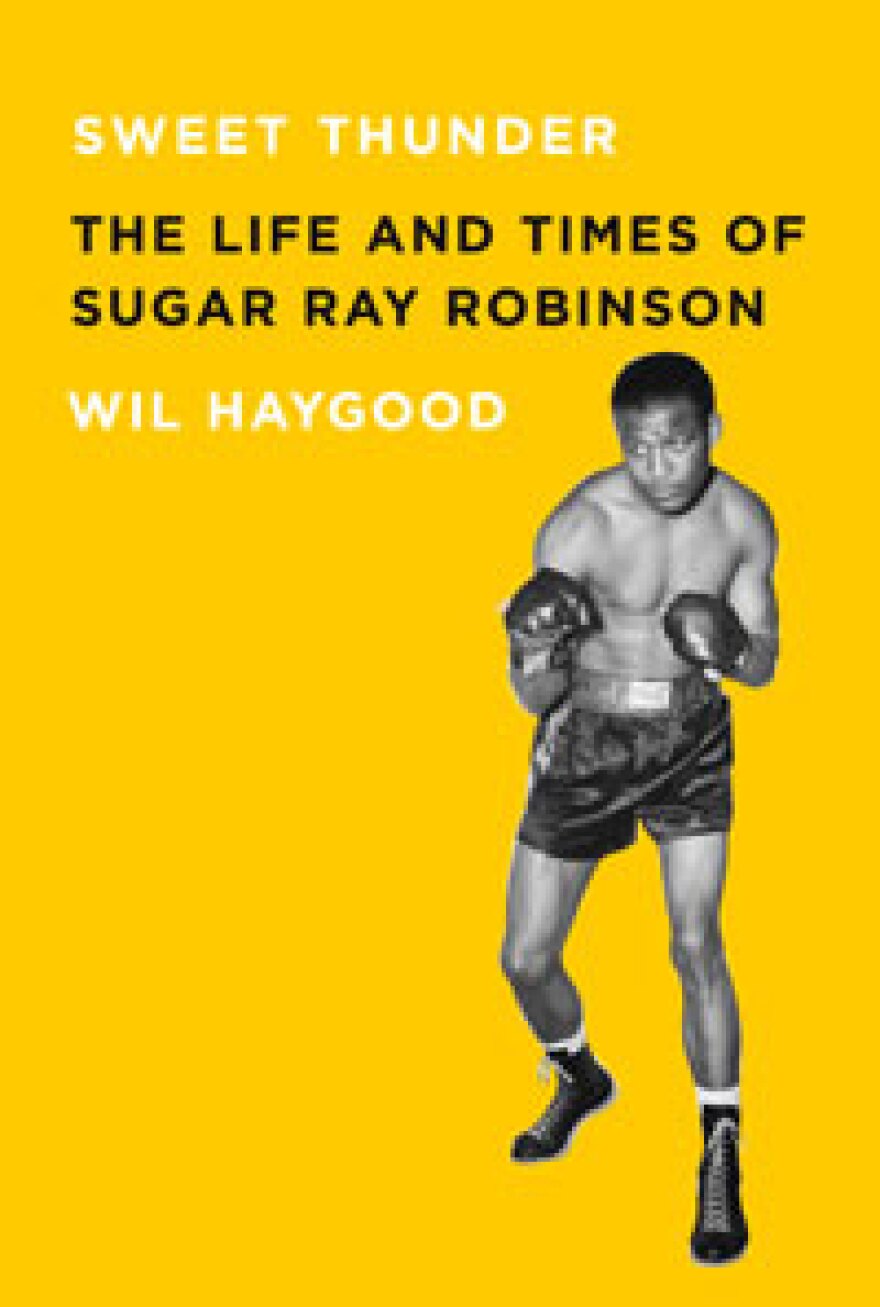Muhammad Ali called him the best boxer ever. He never lost an amateur fight. He won his first 40 bouts as a professional. He held both the welterweight and middleweight championship belts. There's never been another boxer like Sugar Ray Robinson.

Robinson is the subject of a new biography by Wil Haygood called Sweet Thunder: The Life and Times of Sugar Ray Robinson. Haygood tells Morning Edition host Steve Inskeep that Robinson was more than just a great fighter.
"He was the first boxer to take dance and culture and music into the ring," Haygood says. "He was the first boxer to really fight the mob, to retain ownership of his fight rights. He owned a nightclub, which was really a good rebuke to the segregationist nightclubs in New York. Robinson said, 'All right, if my friends Lena Horne and Langston Hughes and Miles Davis and Duke Ellington and Billy Eckstine are not feeling welcome downtown, I'll build a swing club for them uptown and everybody can come.' "
Robinson had elegant taste, Haygood says, and he wanted to elevate the taste of the audience that came to see him box. "I think he wanted people not just to come and say, 'Knock him out, make him bleed ... it's you against Jake LaMotta, black against white.'"
By contrast, LaMotta, Robinson's biggest rival in the ring, was "very blunt, very direct, brutish. He really fought to eat."
Haygood says the two fighters, who fought six times between 1942 and 1951, couldn't have been more different. LaMotta "fought to survive the mean streets of New York City." Robinson "wanted to look beautiful in between rounds," and had a valet to fix his hair if it flew out of place while in the ring.
"Everything that Sugar Ray Robinson represented, Jake LaMotta hated," Haygood says. "Everything Jake LaMotta represented, Sugar Ray Robinson found crude."
In 1943, an undefeated Robinson met LaMotta in the ring for the second time. In the eighth round, LaMotta got the better of Robinson.
"Sugar Ray was coming up out of a crouch," Haygood says. "Jake LaMotta saw an opening — Sugar Ray's chin — and he threw every inch, every muscle, every pound of extra weight and power into Sugar Ray Robinson, and knocked him clean out of the ring."
Robinson had never been knocked down before, "let alone knocked out of the ring," says Haygood. The moment, shockingly captured on film, shook Robinson up. He instantly wanted a rematch. According to Haygood, he told his corner man, "I have to get him back. I have to avenge this. I cannot let Jake LaMotta walk this Earth thinking he's a better fighter than me."
Three weeks later, Robinson fought LaMotta again, and won.
The fighters would meet three more times, with the last fight coming in 1951. The epic bout was the first between the pair to be nationally televised, and viewers at home got quite a shock.
"The fight was so physical, by the fourth round, both fighters were bleeding. By the sixth round, you could hear the grunts from each fighter," Haygood says. "It was almost a fight to the death. ... Many people sat in their living rooms and were aghast at the amount of blood dripping onto their silk trunks, at the amount of blood flying onto the referee."
The fight, which was dramatized in Martin Scorsese's film Raging Bull,, lasted 13 rounds, with Robinson pulling out a hard-won victory.
"Robinson showed that a style and fleetness of foot could win over power and muscle," Haygood says.
But Robinson's aspirations were to transcend boxing. And according to Haygood, he succeeded.
"He was a black man during an era of segregation," Haygood says. "Where else could he have made $25,000 in one night, one fight?"
Still, Haygood says he thinks Robinson would have preferred to switch places with Duke Ellington or Billy Eckstine: "He loved the freedom of the jazz cats, and I don't think he realized how much of a giant he was to them."
Copyright 2023 NPR. To see more, visit https://www.npr.org.


